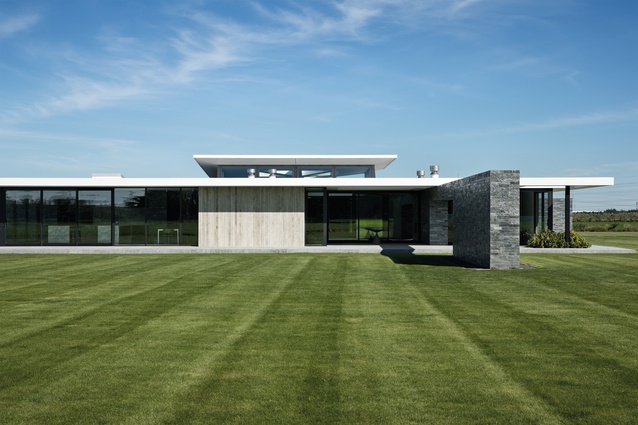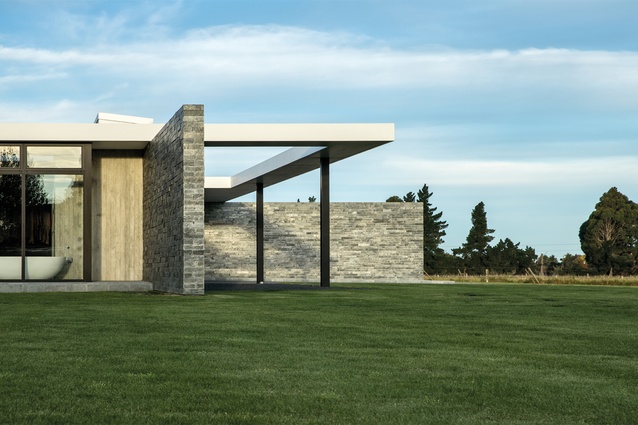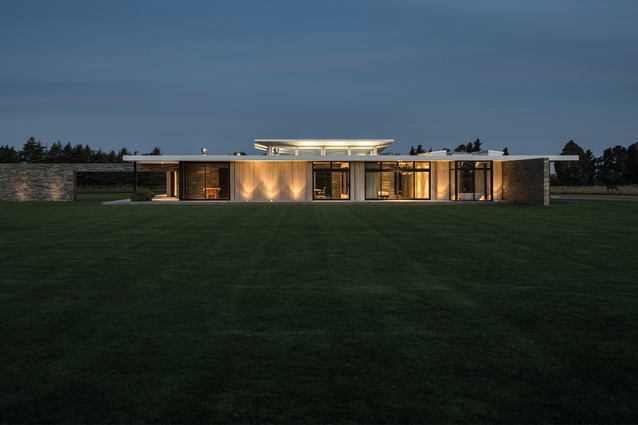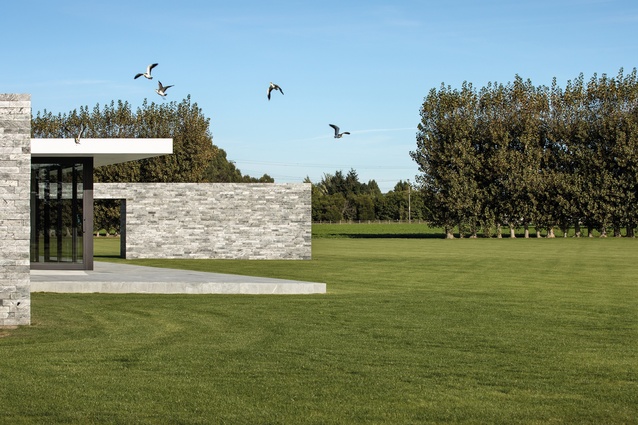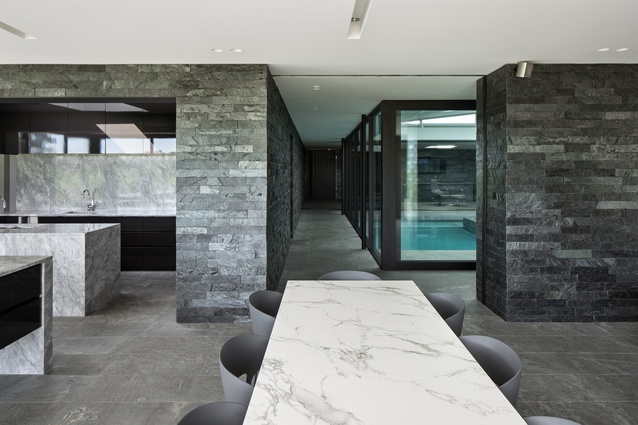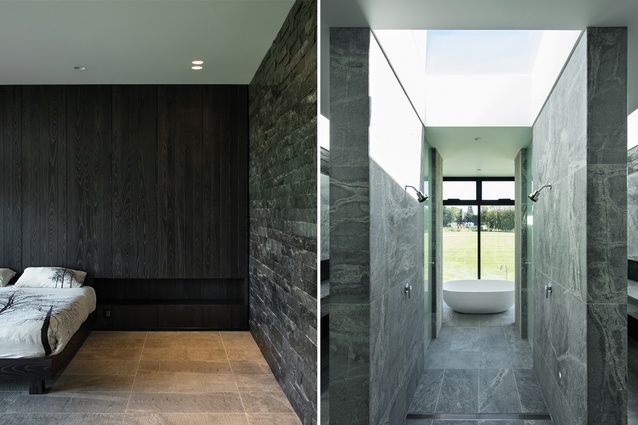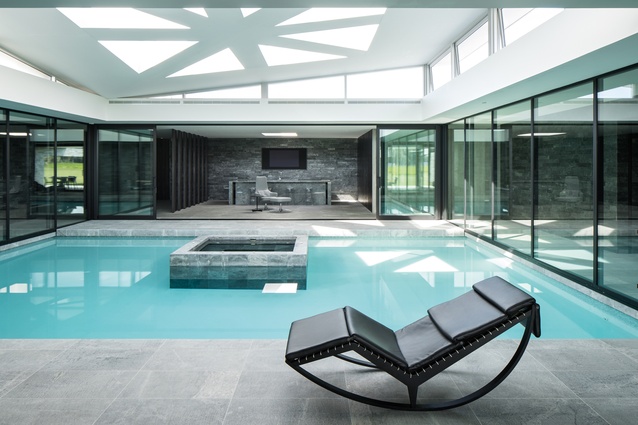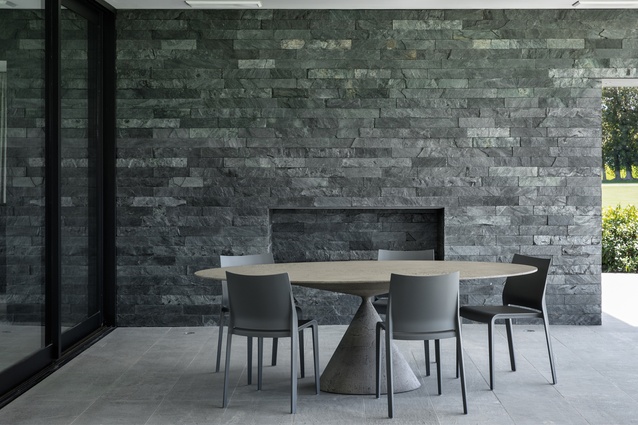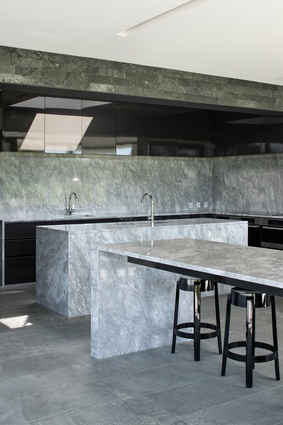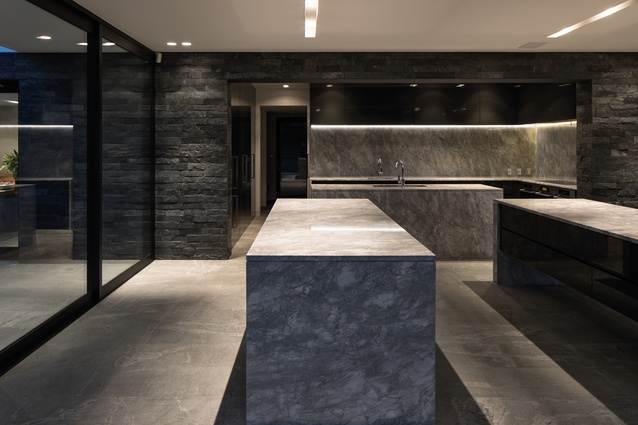Of schist and strata
There is a long, narrow driveway that stems from a busy, semi-rural road in the Christchurch suburb of Yaldhurst. Lucerne – short, round and vibrant green – bobs in the wind on both sides of this paved landing path. In the near distance, tight rows of poplars offer a linear respite from these seemingly infinite plains while, further away, electricity pylons stand tall in an indecipherable pattern: skeletal against a pale-blue sky.
Susie and Darryll Park have lived on this picturesque, eight-hectare piece of Canterbury since 1991. Their original, American-ranch-styled home (think swimming pool and stables) sits close to the main road.
After a sharp, right-hand bend on the driveway, their new four-bedroomed abode reveals itself as a low-lying, elongated and sophisticated geometry. It is part Barcelona Pavilion, part Grahame Sydney. “The rooflines wanted to be a representation of the Canterbury Plains,” says the designer of the house, David Ponting of Ponting Fitzgerald. “A slim, white roof made sense as it would have been silly to try to stand up to that landscape,” he continues.
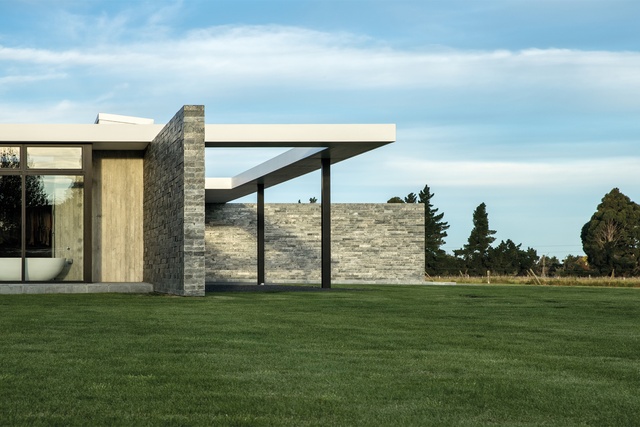
There is also grandness to it: a sort of serious mass that is equal parts imposing and stealth-like in its horizontality. It appears brutishly heavy and rooted to the land yet elegant and fleeting, thanks, in part, to that slender roofline, an even thinner stone floor the designer rightfully refers to as a ‘plinth’ and a protruding, dart-like skylight.
“It was important that the building latched back to the site so that, no matter where the wind came from or where the rolls come from, this building was going to latch on,” continues Ponting.
To accomplish this, the house was designed as a sort of pinwheel: a square mass with a central skylight (more on this later) from which four stone walls shoot out. Each of these reaches towards one of the four main cardinal points while, at the same time, define a gestural component of both interior and exterior. On the north, a wall erupts from the interior and extends deep into the field, like a wing, with a massive rectangular gap.
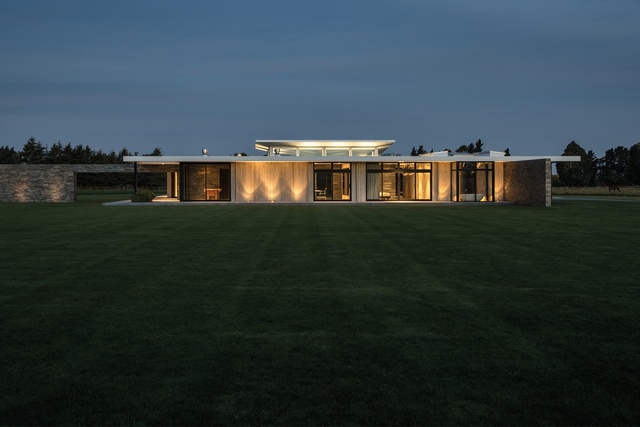
“It was intended to have a sliding door to close that gap from the wind,” says Ponting. “It was there to make sure you could see through it, while at the same time, being shielded, but the wind wasn’t as bad as they thought it was going to be and the wing is now almost a relic… one could almost call it a folly!” he jokes. “I do like the fact that it is very much a powerful frame, and when you are in a landscape that big, things can bleed on into the forever.”
The site is increasingly quiet as one approaches the south-facing main door. The rumble of trucks and fleeting cars on the main road are now replaced by generous birdsong. The silence becomes almost solid once inside where an antechamber composed of raw, dark timbers serves as an introduction to the materiality ahead.
“The house is an abstraction of pieces of [the owners’] relationship and their life,” says Ponting, “but you can’t immediately overlay two people’s tastes as if they were previously synchronised… you have to find little layers that can be. [In this house] they are curiously inlaid… because it was a curious brief.”

According to the designer, during the early discussions, Darryll said he was partial to Tudor while Susie “pulled out a whole lot of Urbis magazines and said she liked that, that, that and that… the backbone of which was a measure of simplicity and International Style elegance.”

The blending of those two is not initially obvious yet Ponting explains the way in which Christchurch is so much about that Englishness, expressed through brick. He “wanted to take that idea and layer it into the strata of these walls, with a rugged feel of the schist… there is a cragginess to the textural quality.”
The stone – silvery and emotive – came in five containers from India and took three stone experts approximately five months to dry stack. Its ruggedness is counterbalanced by a polished granite for the floors while the timbers offer a verticality and warmth. Much of the furniture in the home came from Matisse and compliments the minimal aesthetic of the structure.
“Also, an English house is quite formal,” says Ponting, returning to the Tudor-meets-International brief, “especially at arrival, and there are places you go and places you don’t go as a guest. It has a sense of being allowed through the front door and being given an idea of the great hall, which here happens to have a pool. Then, you have to be led.”
Ponting refers to the hall as a metaphorical “butler leading you to the big room. There was a linearity or formality in experiencing the ceremony of arrival… there isn’t the grand staircase here but if it were a two-storeyed house, it probably would have one!”
Another element of the couple’s relationship turned into architecture is the impressive motif on the skylight above the internal swimming pool. Darryll and Susie, who were both athletes in their youth, met while participating in the 1974 Commonwealth Games. “The skylight is an abstraction of the Commonwealth Games’ logo. I thought it was a romantic opportunity… it was like stamping this memory above them,” according to Ponting.

Beside the intrinsic minimalism of the interior and the cleanliness of the design, Susie refers to the views from the rumpus room and from the impressive kitchen as her favourite aspects in the house. There is a regular stream of pheasants, herons, magpies and starlings out there.
“You have to be careful because sometimes they build nests on the stone, thinking it is a cliff side!” Darryll, on the other hand, expresses the merits of the materials and how insulated the house is from the swinging temperatures. “My first reaction,” says Darryll of his initial encounters with the abode, “was: wow! We wanted a home, not just a house, and this exceeded our expectations.”

